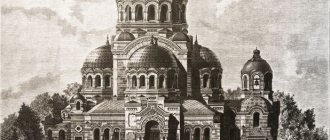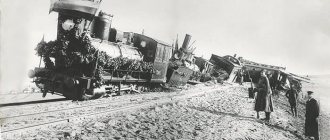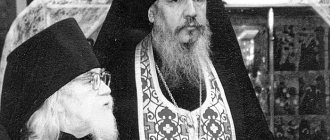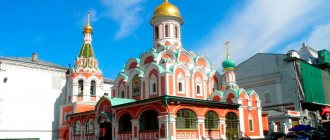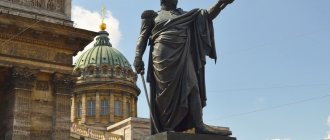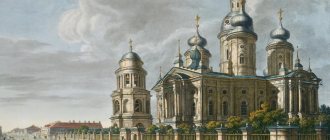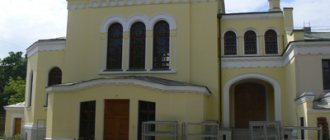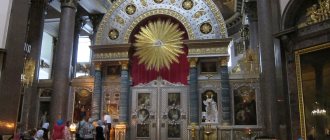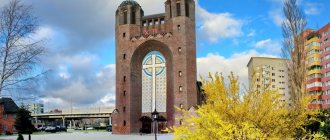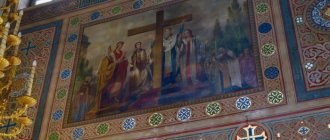Mir
Russia St. Petersburg Cathedral of the Vladimir Icon of the Mother of God (St. Petersburg) Map is loading…
{"format":"leaflet","minzoom":false,"maxzoom":false,"limit":50,"offset":0,"link":"all","sort":[""], "order":[],"headers":"show","mainlabel":"","intro":"","outro":"","searchlabel":"\u2026 \u0441\u043b\u0435\ u0434\u0443\u044e\u0449\u0438\u0435 \u0440\u0435\u0437\u0443\u043b\u044c\u0442\u0430\u0442\u044b","default":"","import-annotation":false,"width ":"auto","height":"350px","centre":{"text":"","title":"""link":"""lat":59.92818100000000214322426472790539264678955078125,"lon": 30.34809489999999954079612507484853267669677734375,"icon":""},"title":"","label":"","icon":"","lines":[],"polygons":[],"circles":[ ],"rectangles":[],"copycoords":false,"static":false,"zoom":8,"defzoom":14,"layers":["OpenStreetMap"],"image layers":[] ,"overlays":[],"resizable":false,"fullscreen":true,"scrollwheelzoom":true,"cluster":false,"clustermaxzoom":9,"clusterzoomonclick":true,"clustermaxradius":80, "clusterspiderfy":true,"geojson":"","clicktarget":"","showtitle":true,"hidenamespace":false,"template":"","userparam":"","activeicon": "","pagelabel":false,"ajaxcoordproperty":"","ajaxquery":"","locations":[{"text":"\u003Cb\u003E\u003Ca href=\"/palomnik/%D0% A1%D0%BE%D0%B1%D0%BE%D1%80_%D0%92%D0%BB%D0%B0%D0%B4%D0%B8%D0%BC%D0%B8%D1%80% D1%81%D0%BA%D0%BE%D0%B9_%D0%B8%D0%BA%D0%BE%D0%BD%D1%8B_%D0%91%D0%BE%D0%B6%D0% B8%D0%B5%D0%B9_%D0%9C%D0%B0%D1%82%D0%B5%D1%80%D0%B8_(%D0%A1%D0%B0%D0%BD%D0%BA %D1%82-%D0%9F%D0%B5%D1%82%D0%B5%D1%80%D0%B1%D1%83%D1%80%D0%B3)\» title=\»\u0421 \u043e\u0431\u043e\u0440 \u0412\u043b\u0430\u0434\u0438\u043c\u0438\u0440\u0441\u043a\u043e\u0439 \u0438\u043a\u043e\u043d\ u044b\u0411\u043e\u0436\u0438 \u0435\u0439 \u041c\u0430\u0442\u0435\u0440\u0438 (\u0421\u0430\u043d\u043a\u0442-\u041f\u0435\u0442\u0435\u0440\u0431\u0443 \u0440\u0433)\»\ u003E\u0421\u043e\u0431\u043e\u0440 \u0412\u043b\u0430\u0434\u0438\u043c\u0438\u0440\u0441\u043a\u043e\u0439 \u0438\u043a\u0 43e\u043d\u044b\u0411\u043e\ u0436\u0438\u0435\u0439 \u041c\u0430\u0442\u0435\u0440\u0438 (\u0421\u0430\u043d\u043a\u0442-\u041f\u0435\u0442\u0435\u0440\u 0431\u0443\u0440\u0433) \u003C/a\u003E\u003C/b\u003E\u003Chr /\u003E\u003Ca href=\»/palomnik/%D0%A1%D0%B2%D0%BE%D0%B9%D1%81%D1%82 %D0%B2%D0%BE:%D0%90%D0%BD%D0%BD%D0%BE%D1%82%D0%B0%D1%86%D0%B8%D1%8F\» title=\ »\u0421\u0432\u043e\u0439\u0441\u0442\u0432\u043e:\u0410\u043d\u043d\u043e\u0442\u0430\u0446\u0438\u044f\»\u003E\u0410\u043 d\u043d\u043e\u0442 "" 0441\u043a\u043e\ u0439 \u0438\u043a\u043e\u043d\u044b \u0411\u043e\u0436\u0438\u0435\u0439 \u041c\u0430\u0442\u0435\u0440\u0438"' \u043f\u043 e\u0441\u0442\u0440\u043e\ u0435\u043d\u0432 1761-1769 0432\u0441\u0430\u043c\u043e\ u043c \u0446\u0435\u043d\u0442\u0440\u0435 \u041f\u0435\u0442\u0435\u0440\u0431\u0443\u0440\u0433\u0430","title":"\u0421\u043e\u0 431\u043e\u0440 \u0412\u043b\u0430\u0434\u0438\u043c\u0438\u0440\u0441\u043a\u043e\u0439 \u0438\u043a\u043e\u043d\u044b \u0411\u043e\u0436\ u0438\u0435\u0439\u041c\u0430 """"lat ":59.92818100000000214322426472790539264678955078125,"lon":30.34809489999999954079612507484853267669677734375,"icon":""}],"imageLayers ":[]}
59.928154; 30.348468
Russia, St. Petersburg, Vladimirsky prospect, 20
Saint Petersburg
Russia
Telephone.:
+7 (812) 312-19-38
Email:
Cathedral of the Vladimir Icon of the Mother of God
built in 1761-1769, located in the very center of St. Petersburg. The names Vladimirsky Prospekt and Vladimirskaya Square come from the Vladimir Church. The temple belongs to the St. Petersburg Diocese of the Russian Orthodox Church and is part of the Central Deanery District.
The emergence of the church
The history of the cathedral began in the 18th century. After the founding of St. Petersburg, servants and craftsmen of the Imperial Court settled across the Fontanka River. The place of their settlement was called Dvortsovaya Sloboda .
In 1746, in the house of Fyodor Yakimov, an employee of the Palace Chancellery, a prayer temple with a linen camp iconostasis was built, where townspeople living in the area came. Soon a small wooden church , which quickly fell into disrepair.
Then the residents turned to Empress Elizabeth Petrovna with a request to build a new building. The collection of funds for the new church from parishioners and patrons of the arts was led by the rector John Kirikov.
In 1761, long-awaited construction began in Dvortsovaya Sloboda, designed by architect Pietro Trezzini. The lower church was opened in 1769, the upper one in 1783. For the consecration of the stone church, Empress Catherine II gave the parish the altar Gospel, printed in 1744.
History[[edit]h2>
The Cathedral of the Vladimir Icon of the Mother of God belongs to the architectural monuments of the 2nd half of the 18th century. The Main Throne of its upper church was consecrated in honor of the Vladimir Icon of the Mother of God, the vigilant and merciful Intercessor of the Russian Land. The Cathedral of the Vladimir Icon of the Mother of God is, as it were, under her grace, which preserved the temple for revival in our time.
Like many St. Petersburg churches, the current Cathedral of the Vladimir Icon of the Mother of God arose on the site of its wooden predecessor. The Church of the Mother of God, the Vladimir Icon, was built in the so-called Palace or Court settlements located behind the Fontanka, in the area of modern Vladimirsky and Zagorodny Avenues. It was founded in 1746 in the house of F. Yakimov, where a camp iconostasis was installed. The arrival of the first wooden five-domed church, built from the wooden building of the Church of St. Sergius purchased in 1747 through the efforts of the chief marshal of the imperial court D. A. Shepelev and the commissar of the department of the main palace chancellery F. Yakimov, was made up of the ranks of the court department stationed in this part of the city. It was the wooden Vladimir Church that became the first, erected after the historical “oral decree” of Empress Elizabeth Petrovna, given to Baron I. A. Cherkasov, manager of the Cabinet of Her Imperial Majesty, on the construction of churches with five chapters “in such a similarity as in Moscow, at the Assumption Cathedral” .
Founded and consecrated in 1747, the wooden church in honor of the Vladimir Icon of the Mother of God in a certain sense became the prototype for subsequent church construction in the northern capital.
On August 25, 1748, in the new wooden church, Archbishop Theodosius consecrated a throne in the name of the Vladimir Mother of God. The day after the consecration, on the temple holiday, Empress Elizaveta Petrovna was present at the Liturgy in the newly consecrated church, who donated 300 rubles to the benefit of the temple. A year later, another throne was built in the church refectory in the name of St. John of Damascus, whose namesake was the head of the court settlements, the above-mentioned manager of the Cabinet of Her Imperial Majesty, Baron I. A. Cherkasov, who also donated his funds for the construction of the church
In 1756, Elizaveta Petrovna, yielding to the requests of parishioners, allowed the inhabitants of the court settlements to collect money for the construction of a stone church. A big role in this matter was played by the priest of the Vladimir Church, John Kirikov, whom many years later the old-timers would even call the builder of the stone church. Father John Kirikov was the main fundraiser, who more than once went to both Novgorod and Moscow with special books to collect donations for the construction of the temple.
Plans and drawings of the new church were ready already in 1759, but laying of the foundation began only on August 20, 1761. After 8 years, the construction of the first floor of a stone temple with three altars was completed. The middle altar in the name of St. John of Damascus in the lower floor of the temple was consecrated on November 8, 1768 by Archbishop Gabriel of Kremenets; the following year, the same eminence consecrated both side altars - on the south side in the name of St. Hieromartyr Harlampy (February 22), and on the north - but the name of St. Prophet Elijah (June 30). The church on the top floor with a throne in the name of the Vladimir Mother of God was finally built in 1783 and was consecrated by Metropolitan Gabriel on April 9, 1783. In the same year, according to the design of the architect D. Quarenghi, the construction of a separate three-tier bell tower was completed. Archival documents did not preserve the name of the architect who designed the stone temple. According to legend, the original project is attributed to the famous architect B. F. Rastrelli. The creation of the final architectural image of the church is associated with the names of the architects of the 19th century—A. I. Melnikova, A. Golma, A. I. Rusko.
In terms of its architecture, the Cathedral of the Vladimir Icon of the Mother of God is a two-tier cross-domed, tetrameter, five-domed, two-story building, with three porches and an apse. The main volume of the cathedral has a square plan with cut corners. From the west, the main volume is adjoined by a refectory room and a vestibule with stairs. Leading to the second floor. The domes of the temple rest on tall round drums topped with onions. The middle drum is topped with a bell-shaped dome. The exterior decoration of the temple is made in Baroque style. The facades are decorated with Corinthian columns, the window openings are decorated with stucco decoration, and the northern and southern facades are decorated with broken arches. On the northwestern and southwestern corners of the site there are stone chapels, also made in the Baroque style. To the north of the cathedral building there is a bell tower, the facades of which are designed in the style of classicism. The bell tower is completed with a dome with a lantern. The elevation of the belfry is 40.5 m, the base of the cross is 64.1 meters from the surface of the earth.
The cathedral and bell tower play an important urban planning role. The building of the Cathedral of the Vladimir Icon of the Mother of God, monumental in size, closes the perspective of Zagorodny Prospect and to this day retains the significance of the architectural dominant of the Vladimir Square area.
The interior of the Upper Temple is defined by massive pylons, stucco decoration at the base of the dome, bas-reliefs of evangelists in sails, which, according to experts, belonged to one of the leading sculptors of that time. The lower part of the temple is squat with a low vaulted roof and massive ceilings, illuminated by the windows of the side ships. The interior of the lower part of the temple, including the iconostasis of the three altars, has not been preserved.
The main decoration of the upper church is the iconostasis of the main altar in the name of the Vladimir Icon of the Mother of God, which miraculously reached our days from the depths of the 18th century and belongs to the unique works of church art, the surviving number of which now does not exceed several dozen throughout Russia. A monument of architecture, icon painting, sculpture and decorative arts, created in the middle of the 18th century according to the design of the brilliant B. F. Rastrelli by the best masters of the Elizabethan era, the iconostasis in its main details has been preserved in its original form, unlike many other iconostases of this architect, lost and restored again in the first half of the 19th century. The iconostasis of the Cathedral of the Vladimir Icon of the Mother of God is an example of a work of genuine St. Petersburg baroque style. The iconostasis is decorated with icons on the front and inner altar sides. The front iconostasis turned into the parish part of the church probably came to the cathedral from the so-called Cabinet Church of the Anichkov Palace after its closure in 1809 or 1810.
In 1868, a new altar was built in the northern side of the upper church in the name of the Mother of God, Joy of All Who Sorrow. In 1872, another throne was built on the southern side of the upper cathedral - in the name of the holy great martyrs Vera, Nadezhda Lyubov and their mother Sophia. This altar was built with funds donated to the cathedral by the hereditary honorary citizen I.P. Lesnikov and consecrated by His Eminence Metropolitan Isidore. After this, the Vladimir Cathedral became a six-altar church.
The temple was closed in 1930 and its premises were given over to the book collections of the State Public Library to house its branch, the Anti-Religious Library, and then also to a construction trust. After the war, the temple, which withstood the blockade, was again transferred to the storage of books of the Library of the Academy of Sciences, and in 1947 to the Lenpromkombinat Fizkultpromsnab for knitting production.
In August 1989, after 60 years of alienation and desolation, the Cathedral of the Vladimir Icon of the Mother of God was transferred to the Leningrad Diocese by decision of the Leningrad City Executive Committee. Prominent secular St. Petersburg residents also contributed to the return of the cathedral - scientist, historian and writer, Russian patriot L. N. Gumilyov and Honorary Citizen of St. Petersburg D. S. Likhachev, one of whose ancestors was the headman of the temple.
On April 7, 1990, on the Annunciation, the church was consecrated by Metropolitan Alexy of Leningrad and Novgorod (Patriarch of Moscow and All Rus' (Ridiger), who became rector of the Cathedral of the Vladimir Icon of the Mother of God. At the same time, Candidate of Theology, Mitred Archpriest Father Vladimir Fomenko was appointed clergyman of the church . Continuing the established tradition, the subsequent rector of the church was Metropolitan John (Snychev) of St. Petersburg and Ladoga. From 1996 to the present, the rector is His Eminence Vladyka Vladimir (Kotlyarov) Metropolitan of St. Petersburg and Ladoga. The parish staff of clergy consists of five priests, three deacons and one psalm-reader.
From August 1991 to the present, the chairman of the parish council is Ivan Sergeevich Raevsky. During this period, work was completed; installation of 8 gilded crosses on the domes of the cathedral and chapels, the upper church was restored. The main domes of the cathedral were covered with copper sheets, as well as the dome of the bell tower, the domes of two chapels with restoration of their facades. The interior of the upper church of the Vladimir Icon of the Mother of God has been updated. Archimandrite Simon consecrated the right side chapel in honor of the holy great martyrs Vera, Nadezhda, Lyubov and their mother Sophia.
Cathedral altars
The cathedral includes a lower - cold church and an upper - warm one. There are six altars in the cathedral. The lower church is consecrated in honor of the rector of the Valaam monastery John of Damascus, the upper church is dedicated to the Vladimir Icon of the Mother of God.
The remaining thrones are consecrated in honor of the prophet Elijah, the holy martyr Harlampius, the icon “Joy of All Who Sorrow,” the holy martyrs Faith, Nadezhda, Love and their mother Sophia.
Icon of the Virgin Mary
One of the main shrines of the temple is a copy of the famous image of the Mother of God of Vladimir.
This icon came to our country from Byzantium. In the 12th century, the Greek Metropolitan Michael from Constantinople came to Kyiv and gave it to the son of Vladimir Monomakh, Prince Mstislav Vladimirovich. The revered image was placed in the Mother of God monastery in Vyshgorod, which was located not far from Kyiv.
In 1155, the son of Yuri Dolgoruky, Andrei, transported the icon to his home in Bogolyubovo, and then to the ancient Assumption Cathedral in Vladimir. This is how the ancient icon got its name - “Vladimirskaya”.
Bell tower of Vladimir Cathedral
During the reign of Vasily I, Tamerlane's troops attacked Rus'. To save the shrine, it was hastily transported to Moscow. In the place where the meeting of Muscovites with the icon took place, or, as they said then, “the meeting,” the Sretensky Monastery was founded. For unknown reasons, the warlike Tamerlane refused to capture Moscow and, having reached Yelets, turned back.
Muscovites regarded the miraculous salvation as the intercession of the Mother of Christ, and the icon turned into one of the main Orthodox shrines. In 1930, the original was transferred to the Tretyakov Gallery. Today, the revered image is exhibited in the Church-Museum of St. Nicholas the Wonderworker in Tolmachi, which has the status of a house church at an art gallery.
Miraculous Vladimir Icon of the Mother of God
The cathedral is named after the miraculous icon of the Mother of God, which was brought to St. Petersburg in 1763.
Interesting! According to church tradition, the Vladimir Icon was painted by the holy Apostle Luke.
The evangelist captured a picture seen at the dinner table, at which little Jesus Christ with his Most Pure Mother and Righteous Joseph were eating. The mother's caring arms gently embrace her son, who clings tenderly to her. There is sorrow on Mary’s face.
On the board from the table, Luke depicted what he saw. When the artist brought the icon to the Mother of God, Mary said: “From now on, all my people will bless Me. May the grace of the One born of Me and Mine be with this icon.”
The icon visited Jerusalem and Constantinople. At the beginning of the 7th century, the icon was delivered from Constantinople to Kyiv as a gift to Grand Duke Yuri Dolgoruky from Patriarch Luke Chrysovergus.
Prince Andrei, the son of Yuri Dolgoruky, traveled from the south of Russia to the Rostov region and took the miraculous image with him. While praying in front of the icon, he received instructions from the Mother of God to leave the image in Vladimir. Since then, the icon has been named Vladimirskaya. The Church of the Assumption was founded for her in the city.
Then, by the providence of God, the holy image was transported to Moscow, which needed the protection of the Mother of God. Over the course of the appearance of the miraculous icon, many amazing events related to it occurred:
- At the end of the 14th century, the Mother of God defended Rus' from Khan Tamerlane;
- In the middle of the 15th century, the icon saved the capital from an attack by the Tatars;
- At the end of the 15th century, the battle with the Mongol-Tatars did not take place: Russian soldiers came out to meet the enemy, carrying the icon of the Savior in the front row, and the enemy immediately retreated.
History of the Prince Vladimir Cathedral
The history of the temple is usually counted from the foundation of the wooden church of St. in 1708. Nikola on Mokrusha. Mokrusha was a low-lying, periodically flooded area of the first city blocks of St. Petersburg, located west of the Peter and Paul Fortress. In 1717, the Church of St. St. Nicholas was replaced by a mud-brick church, which had three altars, the main one of which was consecrated in honor of the Dormition of the Virgin Mary, and the side chapels were named Nikolsky and Predtechensky. In 1719-1724. Peter the Great prayed in the cathedral. In 1740, by decree of Anna Ioanovna, the laying of a new stone church began to replace the wooden Assumption Cathedral. However, palace coups and other historical events prevented construction. Only in 1765, during the time of Catherine the Great, did they return to the unfinished project.
According to the new plan, the temple was to become five-domed, in imitation of the Assumption Cathedral of the Moscow Kremlin. The original version was single-domed, the same as in the neighboring Peter and Paul Fortress Cathedral. The choice fell on the design of the Italian architect Antonio Rinaldi, who undertook to complete the construction of the temple and completed the rough construction by 1772.
© Monoklon
The construction was again interrupted for several years, and the architect I. E. Starov completed the construction of the church and its decoration. On October 1, 1789, the cathedral was consecrated under a new name - instead of Assumption, it received the name Prince of Vladimir. The reason for this change was important historical victories on the southern borders of the Russian Empire. It was at this time that the Tauride Governorate appeared as part of the Russian Empire on the site of the Crimean Khanate, and in St. Petersburg the architect I. E. Starov built the Tauride Palace.
Successful military operations in the Black Sea region and Crimea revived the historical memory of Prince Vladimir, who converted to Christianity and became related to the Byzantine royal house. Historical parallels with the actions of Prince Vladimir created a symbolic aura of continuity of national history. During these same years, the Empress established the Order of the Holy Equal-to-the-Apostles Prince Vladimir of four degrees.
© Ekaterina Borisova
Formation of the architectural ensemble of the cathedral
The architectural ensemble of the Vladimir Church took shape by the middle of the 19th century. In 1791, the talented architect Giacomo Quarenghi built a three-tier bell tower. In 1830, the Russian architect Abraham Melnikov built a vestibule, and later a fourth tier was added to the bell tower building. Two chapels and a stone fence were installed on the church grounds.
The new church, designed in the style of transition from Baroque to Classicism, was built with five domes at the behest of Elizaveta Petrovna. In plan it is a square with cut corners. The church building merges with a 67-meter bell tower, which ends with a round dome with a lantern.
The two-story building was built in a strict, classically restrained style, and the facades and bell tower are decorated with lush Baroque elements: stucco decoration, columns, arched arches and many sculptures on the facades.
The stone chapels are decorated with domes and figured turrets of unequal sizes. The tall drums of the cathedral are crowned with graceful onion domes.
On the central drum there is a high bell-shaped dome, decorated with an elegant dome. The drums have round windows, the central drum is cut through with triangular sandriks - cornices over the window openings.
There are small domes above the refectory and altar parts of the building, so the result is an architectural symphony of domes and crosses.
Description
The upper church of the temple was consecrated in 1783 in the name of the icon of the Vladimir Mother of God. Unfortunately, the rector of the church, Father John, did not live to see this long-awaited day: he was brutally killed by robbers. He was buried in the monastery fence and a marble monument was erected on his grave.
Vladimir Church (St. Petersburg) is a two-story, five-domed building with crosses on the domes, an apse and three porches. The building was built in the Baroque style and is a square in section with truncated corners. Experts believe that Vladimir Cathedral has a special architectural purpose. Compared to the background of neighboring buildings, it looks unusually majestic. The temple is the apogee and main building of the square, which overlooks Vladimirsky Avenue.
Its yellow walls ending with black domes create an amazing image, as if it came from ancient times. Many say that Vladimir Cathedral carries a special energy. They say that when people touch its walls, they seem to receive strength.
Interior
The interior decoration is dominated by rigor and simplicity. On the arches of the main dome are sculptures of the four evangelists. The walls are decorated with pilasters and copies of paintings of biblical scenes by Raphael and Paolo Veronese; there are no frescoes in the temple.
At the beginning of the 19th century, an ark containing particles of the relics of 150 saints was donated to the temple. An antique chandelier of gilded bronze with crystal “tears” – a gift from Elizaveta Petrovna.
Architectural features
Built in the Baroque tradition, the Vladimir Church (St. Petersburg) is decorated with lush window frames and columns. The domes of the cathedral on high cylindrical drums look great in proportions and beauty of silhouettes. The composition is complicated by protrusions on the southern and northern sides. The five-domed structure in which the Vladimir Church (St. Petersburg) is built is especially well done: the high drums seem to soar upward behind the graceful onion-shaped domes. Their surfaces are decorated with widely paired pilasters and high windows with a semi-circular finish.
Iconostasis
The three-tiered gilded iconostasis with rich carvings was created by Russian craftsmen based on the drawings of Bartolomeo Rastrelli. An example of the Baroque school, it is decorated on both sides - parish and altar.
The tiers with 24 icons are separated by cornices, which are supported by columns. Above the Royal Doors are the icons “Resurrection of the Lord” and “Coronation of the Mother of God”. In the Festive Series - “The Presentation of the Lord”, “Prayer of the Cup”, “Adoration of the Magi”, “Ascension of the Holy Spirit on the Apostles”.
The images in the iconostasis are not placed randomly. Here are icons of the heavenly patrons of the family of Elizabeth Petrovna, during whose reign the construction of the temple began.
Decoration of the Vladimir Icon of the Mother of God
In the St. Petersburg Cathedral there is a copy of the miraculous icon of the Mother of God of Vladimir, which is revered no less than the original. In memory of the miraculous intercessions of the Mother of God, the church established the days of celebration on May 21, June 23 and August 26.
The icon is decorated with a gilded silver robe, studded with pearls and precious stones. The crown is made of oriental crystal, the crown on the crown is made of multi-colored stones, diamonds, yachts, emeralds, sapphires and topaz shine between them. In the middle of the crown is a small image of the Mother of God in enamel (enamel decoration).
On the margins of the image - in enamel - there are 4 oval images: the Nativity of the Mother of God, the Entry into the Temple, the Annunciation and the Assumption. Above and below are images of memorable events related to the icon. The saints are depicted on the sides: Peter, Jonah, Alexy and the holy blessed prince Alexander Nevsky. The images are covered with chased silver.
General information: address
It is difficult, having arrived in the Northern capital for two or three days, to see all the architectural monuments for which it is famous. Most of them are located in the city center. The Vladimir Church (St. Petersburg) is no exception. The address of this temple is known to every native resident of the city. Tourists often come here. And this is not surprising. After all, many of them got married here, baptized their children and ordered the unction of their loved ones. Temple address: Vladimirsky Prospekt, building 20.
The cathedral stands on one of the central squares of the city, next to the metro station of the same name. The landmark for it can be the monument to Dostoevsky and the house-museum of this great classic. The Vladimir Cathedral was built in honor of the icon of the Mother of God, which was considered the protector of the Russian land.
Many theologians believe that it was thanks to her patronage that the temple remained unharmed to this day. Currently, not only divine services are held here, but also the sacraments of weddings and baptisms. Vladimir Church (St. Petersburg), where unction is held on Tuesdays and Thursdays during Lent, has long been a place where people come to seek help from the Mother of God.
Church garden
Behind the cathedral fence there was a church garden, which the organizers used for religious edification. In the garden there are four-column gazebos, each with a gilded dome with the figure of an evangelist.
The gazebo is decorated in such a way that it reflects the main stages of the Savior’s earthly life: the Crucifixion, the Descent from the Cross, the appearance of the risen Savior to Mary Magdalene, the journey to Emmaus.
The gazebos are united by a bronze gilded dome. Between the pavilions a cave was erected, in the dome of which there was a temple surrounded by clouds and golden rays.
Shrines
The main value of the temple is the iconostasis of the upper altar. It is one of the ten unique creations of church art. The iconostasis project was developed by Rastrelli himself. It was brought to life by the best masters of the Elizabethan era.
But the most important thing that the Vladimir Church (St. Petersburg) is really proud of is its icons. In first place is the image of the Mother of God itself, which came to Russia at the beginning of the twelfth century from Byzantium. Its author is the evangelist Luke, who depicted Mary with her husband and little Christ eating a meal.
If you look at the icon from the reverse side, you can see the image of the throne and the instrument of passion.
Another shrine of the cathedral is “Savior Not Made by Hands”. This icon depicting the Savior is famous for the fact that, according to legend, it gives strength to overcome difficulties, helps overcome illnesses and gives tips in solving problems. It is this miraculous image that the Vladimir Church (St. Petersburg) is famous for.
Famous parishioners of the temple
The life story of A.S. is connected with the arrival of the Vladimir Church. Pushkin. The poet’s parents lived not far from Vladimirskaya Square: Sergei Lvovich and Nadezhda Osipovna. When my son came to visit, he came to the service in the cathedral.
In 1828, the funeral service was held here for Pushkin’s nanny, the beloved Arina Rodionovna. In 1831, the priests of the temple performed the funeral service for Pushkin’s close friend, Baron Anton Delvig. The poet and publisher died at the age of 32 from typhus.
A famous parishioner of the church is Fyodor Mikhailovich Dostoevsky, who lived nearby in Kuznechny Lane. The poet Nikolai Alekseevich Nekrasov, the writer Alexander Ivanovich Kuprin, and the composer Rimsky-Korsakov prayed here.
During imperial times, the church was the richest in the capital. The townspeople came here to worship three great shrines:
- Vladimir Icon of the Mother of God;
- The image of the “Savior Not Made by Hands”;
- Icon of Seraphim of Sarov with particles of his relics.
Schedule of services[[edit]h2>
Divine services are held in the cathedral every day.
At 9:00 – Liturgy. On Sundays and twelve feasts, two Liturgies are celebrated, at 7:00 and 10:00. Confession begins half an hour before the start of the Liturgy.
At 18:00 – all-night vigil.
At the evening service akathists are sung:
On Monday, Akathist to St. Seraphim, the Wonderworker of Sarov;
on Thursday - Akathist to St. Nicholas, Peace of the Lycian Wonderworker;
on Sunday - akathist to Jesus Christ and the Most Holy Theotokos (alternately).
The schedule of services is regularly updated on the temple website.
Life of the Church after the Revolution
After the revolution, the Vladimir temple was closed to believers. The good building remains intact. To prevent the golden domes from being conspicuous, they were painted over with black paint. An anti-religious section of the Public Library was set up inside the temple.
Interesting! In 1933, the bells were thrown down and smashed. The iconostasis and paintings on the first floor were destroyed.
In 1941, the temple was planned to be demolished. The library was removed from the building, which was damaged during the war, a knitting factory was set up, and machines were brought in. From 1950-1990, the city ambulance station operated in the church. There was a parking lot on the site of the church garden.
In the year of the 1000th anniversary of the Baptism of Rus', the church was returned to the believers. Gradually, with the help of parishioners, the temple was restored to its former splendor.
Opening hours
The temple is one of the most beloved cultural spaces by believers, where many diverse events are organized. There is a Sunday school at the church. For tourists, the Vladimir Cathedral is of interest both as an example of the architecture of its era, and as a monument of national culture, and as one of the points of the excursion program in St. Petersburg. In addition, the church is the center of spiritual life, a place where believers gather. The temple's opening hours are as follows: from Monday to Saturday it is open from eight o'clock in the morning to nine in the evening. On Sunday the cathedral opens its doors an hour earlier.
Worship in the church is held every day. The Divine Liturgy is celebrated at nine in the morning, on Sundays at seven and ten o’clock. Confession takes place half an hour before it begins, and at the end there is Holy Communion.
Not only believers, but also townspeople come here. On major holidays, the Vladimir Church (St. Petersburg) has great difficulty accommodating people. The Easter hours (many townspeople come to bless the Easter cakes) are read instead of morning and evening prayers throughout the Seventh Week.
Parish life of the Vladimir Church
Today the ancient temple has been restored, the domes shine with gilding. a Sunday school at the church , the purpose of which is to revive lost family traditions and introduce children to Orthodox culture. More than one generation of children grew up here in the spirit of veneration of the shrine.
The children's choir of the church is world famous, where they instill in children a love of church singing. Since 2000, a school of bell ringers for children and adults has been created here. The parish of the Vladimir Church is engaged in charity: they collect parcels with Orthodox literature, medicines and clothing for places of detention, provide support to sick, lonely people and orphans.
The church has a library and social service, clubs for adults and children. Every day, philanthropists distribute hot food to those in need. With the participation of the parish of the Vladimir Church, a monument to F.M. was erected near the temple in 1997. Dostoevsky. Restoration work is ongoing in the cathedral.
Current state
After restoration, the Vladimir Church in St. Petersburg appeared in its original form. The gilding was returned to the domes. During the work, both floors of the church were restored. The upper hall was done first. Its interior has been almost completely restored. The original iconostases have been preserved here: 2 of them date back to the 18th century. and two by the 19th century.
In 2022, the lower church was opened to parishioners. It was not possible to restore the original appearance of the lower floor. Many icons, including iconostases, were lost.
Now a new iconostasis is being made here, which will be built in the spirit of that time. To do this, they use drawings from F. Rastrelli’s masterpiece. In 2015, a new bell, called “Vladyka,” was raised to the bell tower. Today the Vladimir Church lives a rich life.
On its basis there are:
- a school of bell ringers, where they teach masterful bell ringing;
- children's Sunday school "Logos";
- an Orthodox youth club, whose members organize festive and public events;
- library;
- publishing house that publishes a parish newspaper (now an electronic version).
The church activists carry out charitable work:
- provide material and spiritual assistance to the sick;
- offer legal services;
- They help the disadvantaged: they distribute hot meals.
The Vladimir Church organized a children's choir, which is famous not only in St. Petersburg, but throughout the country, as well as outside Russia.
Interior decoration
Sculptures of the four Evangelists have been preserved on the vaults of the main dome. On the second floor you can see a carved iconostasis of rare beauty, which came to the temple in 1808.
This work of art was created by Russian craftsmen based on a drawing by the famous architect Francesco Bartolomeo Rastrelli for the Anichkov Palace. It is noteworthy that no more than a dozen such monuments of Peter the Great’s Baroque remain in our country.
View of the Vladimir Icon of the Mother of God above the entrance to the cathedral
How to get there
The temple complex stands on Vladimirskaya Square, in the Central district of the city. The cathedral occupies the territory between Vladimirsky Prospekt, Kolokolnaya Street and Kuznechny Lane. The exits from the Vladimirskaya and Dostoevskaya metro stations are nearby. The temple is easily accessible on foot from the Ploshchad Vosstaniya and Mayakovskaya metro stations.
Attraction rating
Rating 5.00 [1[1 Vote]p>
| ← CATHEDRALS AND TEMPLES | SAINT PETERSBURG → |
